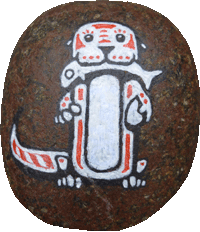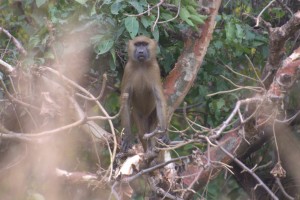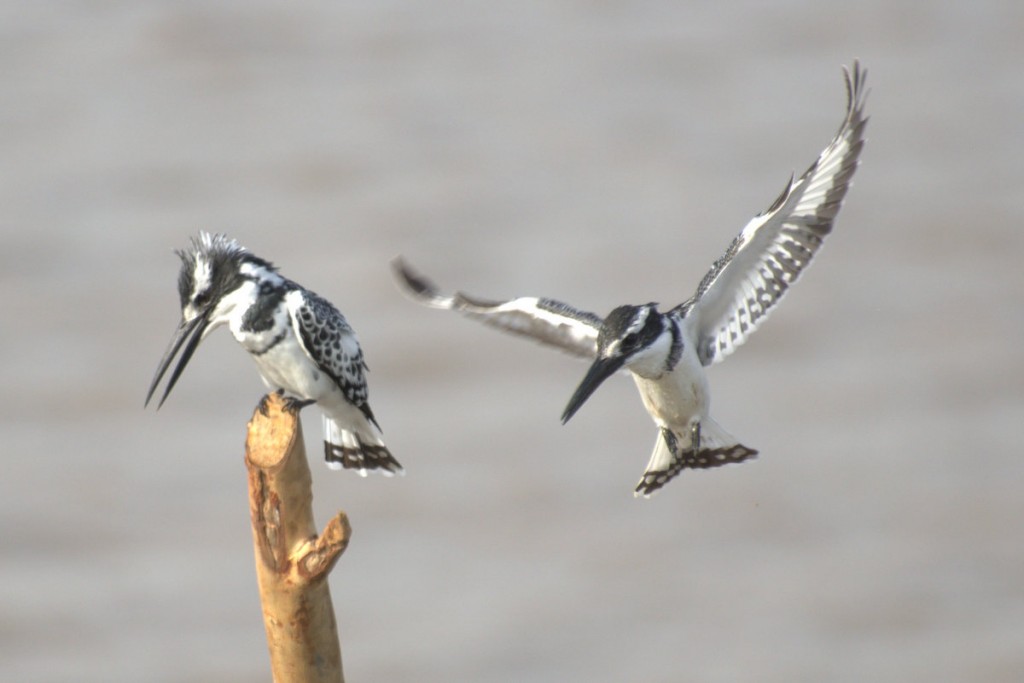Up until our arrival at Tendaba our mammal list for The Gambia was one item long – the green vervet monkey seen at Tanji. Now it’s up to ten mammals (including 7 or 8 we’ve never seen before):
- Green vervet monkey – seen at Tanji bird reserve & Bo Bolong
- Patas monkey – en route to Tendaba and near Tendaba
- Bottlenose dolphin – boat across Gambia river
- Red colobus monkey – bo Bolong, lone juvenile scaring birds
- Epaullated fruit bat – tree outside our hut in Tendaba
- Gambian sun squirrel – behind Tendaba camp
- Warthog – Kiang West national park
- African scrub hare – breaking cover at our feet, Kiang West
- Guinea baboon – heckling us, Kiang West
- Senegal bushbaby – at least ten, in the woods in Kiang West
The last four on the list are all down to our visit this afternoon to Kiang West National Park, just downriver of Tendaba Camp (odd safari camp really – it’s in a village, rather than in the national park!). The park is in a bit of a sad state. Our Bradt Guide recommends what parts of the park to drive around to see the best wildlife, but almost all of it is now inaccessible because the tracks have not been maintained. Even the parts we could visit were accessed via rather overgrown trails. But we got distant views of warthogs, a great look at a troop of guinea baboons, and we started up a scrub hare who raced away into cover. After dark our torches picked out at least ten bush babies jumping around in the trees; lovely little cuddlesome primates but impossible to photograph.
Junkung explained that the government isn’t really interested in wildlife and conservation, and it’s true that The Gambia is known as a beach-and-sun destination rather than a safari one. It has none of the impressive critters found elsewhere in Africa – no lions, cheetahs, elephants and rhinos – so it’s no wonder. But it’s still a shame.
Related Images:















































